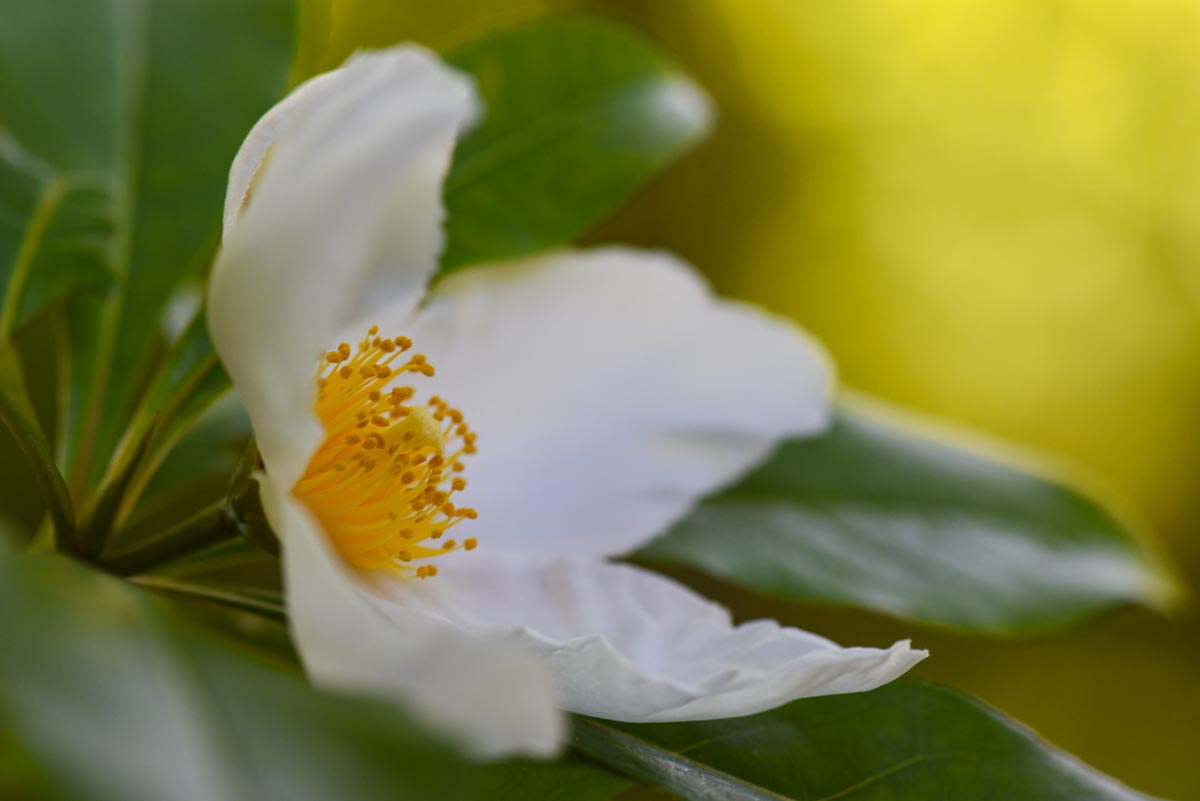In my first garden in central North Carolina I grew both Franklinia alatamaha and Gordonia lasianthus. One winter a major ice storm coated the Gordonia leaves which persist through winter. The tree started to bend from the weight, and I was afraid branches might break off. In dedication bordering on obsession, I ran an extension cord out from the side of my house and hooked up a hair dryer to slowly melt the ice off each leaf. The plant survived, though I’m less certain of my sanity.
A few years after I left my garden there, Tom Ranney of North Carolina State University successfully crossed these two species, producing the intergeneric hybrid Gordlinia grandiflora, known as mountain gordlinia. He made the cross in the summer of 2002, and the following December propagated 9 hybrids from the seeds. This had been tried a number of times before, but his was the first success.
Since this Franken-Tree has only existed for 20 years there is still much to learn, but it seems to grow as a large shrub or small tree. It is more resistant to root rot than Franklinia, and more tolerant of cold than Gordonia. So far with my tree the leaves are semi-evergreen, some remain green and some turn bright red, then slowly drop through winter. As seen in this picture it has late summer flowers, larger than either parent, which Dr. Ranney described as “like big fried eggs” with white petals in contrast with yellow stamens.
I have a few small Franklinia trees scattered in my yard and am growing more from seed. So far none of them have flowered, and they are known to be temperamental. So it is nice to have this improved tree producing such a beautiful bloom, at a time when many of my plants are already settling in for the slow decline toward winter. My goal is to have something flowering every day of the year, and Gordlinia helpfully fills this slower season in my garden.
